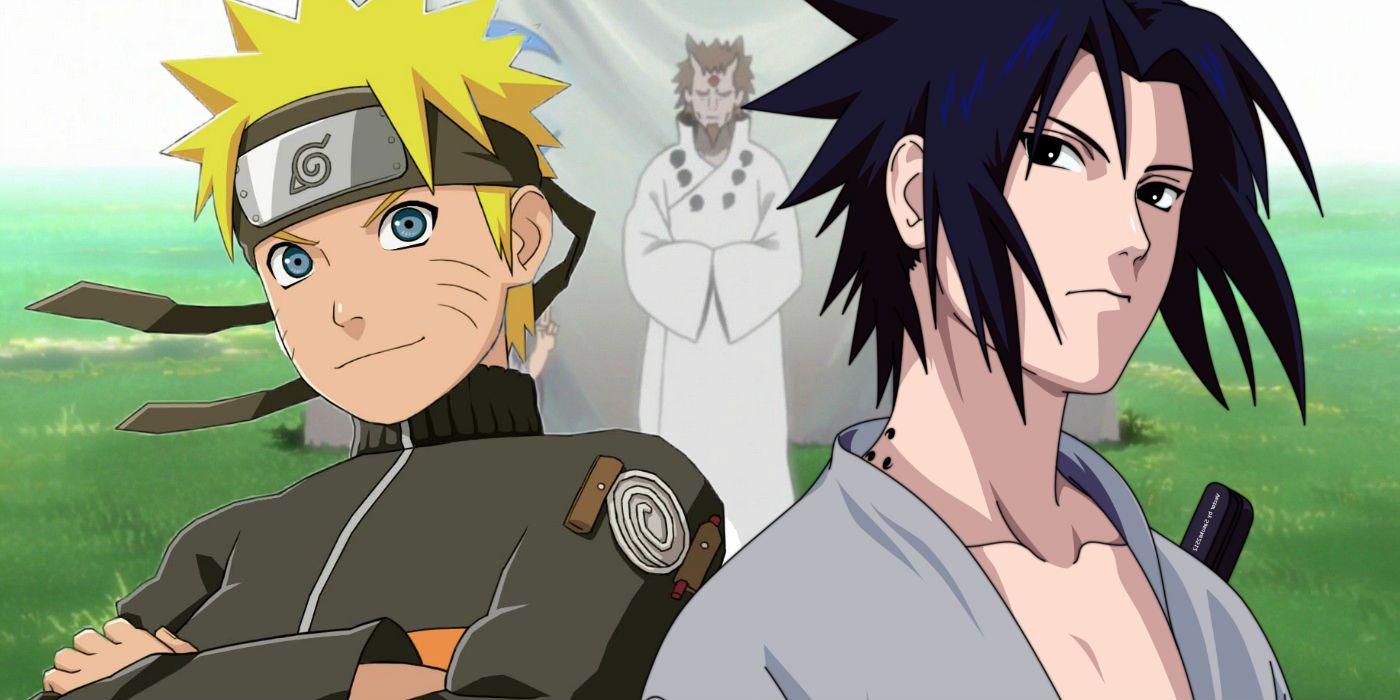The ending of the Naruto story delivers a late game-changing twist that alters the landscape of Masashi Kishimoto’s fiction world, but it didn’t quite have the desired effect. Naruto‘s closing sequence comprises of several major fights, firstly against Madara Uchiha, then against Kaguya Otsutsuki and then, finally, the fated battle between Naruto and Sasuke. Among the action is some salient information, including the revelation that Naruto and Sasuke are reincarnations of the Sage of Six Path’s two sons, Asura and Indra. All through the Naruto story, this mythical sage is touted as the progenitor of all ninja, but flashbacks reveal him to be the son of Kaguya, who helped defeat his mother during her first chakra rampage.
Click the button below to start this article in quick view.
On his deathbed, the Sage of Six Paths chose to pass his power to the Asura, rather than Indra, which sparked a conflict between the two brothers and their respective followers. While Asura was the less gifted of the two, he was kinder, more cooperative and willing to work, whereas Indra would simply use his natural power to solve problems. Unable to accept his father’s decision, Indra resolved to destroy the way of the ninja, and Asura vowed to protect it, and this fight would continue until both men died. Asura was succeeded by the Senju and Uzumaki clans, while Indra started the Uchiha.
The reincarnation twist can be a confusing moment in Naruto‘s ending, since it reframes the entire story right at the very end, while also raising several questions that largely go unanswered. Unsatisfied at not resolving the feud with his brother, it’s Asura who begins a chain of regeneration, where the chakra and the spirits of Hagoromo’s two sons are passed down through the descendants, meaning each generation essentially has its own Asura and Indra. While the process is a little murky, it’s confirmed that the brothers’ souls choose blood descendants whose characteristics mirror their own. For instance, Asura picks Naruto presumably because of his determination and ability to draw others towards him.
The first reincarnations revealed in Naruto are Hashirama and Madara, who also fought to a stalemate, and the souls of Asura and Indra eventually pass into Naruto and Sasuke. It’s never explained how much being a reincarnation of the brothers influences Naruto and Sasuke’s actions throughout the series. Certainly, it’s suggested that their rivalry was a product of fate, and this arguably detracts from all the other factors around their feud – Sasuke’s desire for revenge, Naruto’s yearning for friendship, the time spent as part of Team 7, etc. Somehow, putting everything down to destiny makes the duo’s entire journey feel less valuable than if it had been entirely their own.
In the final battle against Kaguya, it’s via the chakra of Asura and Indra that Naruto and Sasuke are able to commune with the spirit of Hagoromo and receive his power. Once the battle is over and Naruto and Sasuke manage to settle the generations-long feud that lives on inside them, the reincarnation cycle presumably ends.
Naruto‘s reincarnation twist doesn’t work for a number of reasons. Firstly, the reveal came so late in the story and around so many other key events, that there wasn’t sufficient time to explain such a complicated, intrinsic piece of mythology. Fans were left to guess for themselves how the reincarnation cycle had affected the past and whether it would continue into future generations.
Much more problematically, the twist completely alters the meaning of Naruto as a character. So many times throughout his journey, Naruto fights back against destiny, preaching to the likes of Neji and Nagato about ignoring the past and forging a new path. When it transpires that Naruto has simply been following a preordained pattern, his words suddenly carry less weight. It’s clear that Naruto uses the reincarnation story to tie the present and the past together, and thus make Naruto and Sasuke’s fight carry higher stakes. While this goal is definitely achieved, the twist can’t help but feel tacked-on and out of place against the rest of the young ninja’s story.
